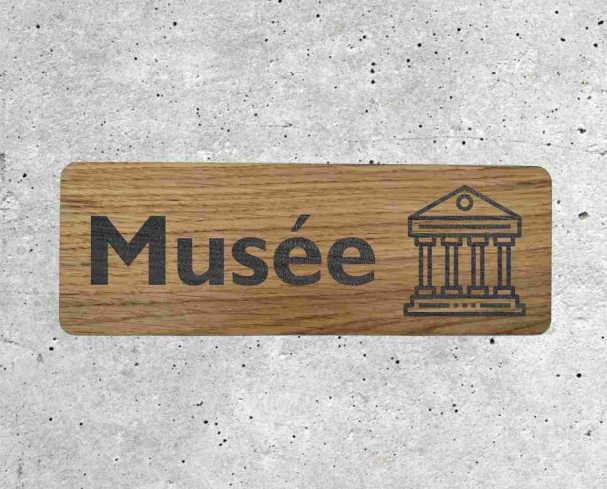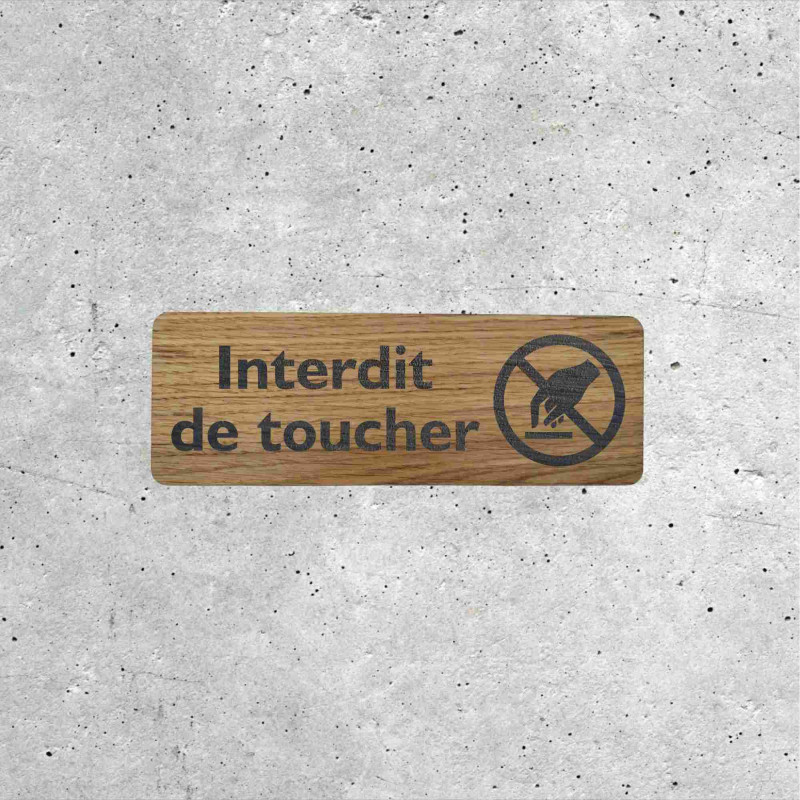
Combining Culture and Ecology

The Benefits of Sustainable Signage for Museums
What is Sustainable Signage?
Sustainable signage is based on three main pillars:
- Ecological Materials: Certified wood, bamboo, natural paints.
- Responsible Manufacturing Processes: Low energy consumption, recycling of offcuts, local production.
- Longevity: Signage designed to last and withstand the test of time.
A Reduced Environmental Impact
Choosing durable materials such as wood significantly reduces the carbon footprint. Wood can capture and store CO₂, making it a carbon-positive material. Furthermore, modern processing methods, such as laser engraving or CNC cutting, consume little energy and generate minimal waste.
Improved Public Perception
Adopting eco-friendly signage also enhances a museum's brand image. Visitors, increasingly aware of environmental issues, value such initiatives. Communicating about sustainable signage can even serve as an educational tool to raise public awareness of climate challenges.
Wood: A Natural Ally for Sustainable Signage
Why Choose Wood?
Wood is a versatile, renewable, and timeless material. It is particularly well-suited for sustainable signage for several reasons:
- Carbon-Positive Footprint: Unlike plastic or metal, wood absorbs CO₂ during its growth.
- Warm Aesthetic: Its natural appearance blends harmoniously into all spaces, whether modern or historical.
- Recyclability and Biodegradability: At the end of its life cycle, wooden panels can be recycled or composted.
Certification and Controlled Origin
To ensure minimal environmental impact, it is essential to prioritize wood from sustainably managed forests. This guarantees traceability and responsible resource management.
Modern Manufacturing Techniques
Laser engraving and CNC cutting allow wood to be worked with precision, without producing unnecessary waste. These methods also consume less energy than traditional processes while offering personalized finishes (directional panels, engraved explanatory plaques, etc.).
Museums Already Engaged in Ecological Transition
Concrete Examples of Wooden Signage
Many museums in France and internationally have already taken the step:
- A History Museum in Bordeaux: Explanatory panels in engraved raw oak, highlighting local narratives.
- A Modern Art Gallery in Lyon: Directional signage in light wood, integrated into contemporary architecture.
- A Children's Museum in Paris: Use of reclaimed wood plaques for interactive workshops.
Measurable Results
These museums observe a reduction in waste, greater public acceptance, and a modernized image of their institution. Additionally, the longevity of wood reduces maintenance and replacement costs, making this solution a long-term investment.
How to Integrate Sustainable Signage into a Museum?
Assessing Needs
The first step is to analyze the museum spaces and define priorities:
- Which panels need updating?
- Which materials are best suited for each area (indoor, outdoor)?
- Which designs reflect the museum’s identity?
Collaborating with Specialized Artisans
Working with experts in sustainable signage ensures high-quality results. For example, Ma signalétique bois offers local, artisanal manufacturing with full customization through modern techniques.
Raising Visitor Awareness
Museums can use their signage to tell a story. For instance, explanatory panels can include information about the wood used, its origin, and its ecological impact.
Communicating the Eco-Responsible Initiative
Beyond installation, it is important to highlight this initiative through communications (website, social media, exhibitions). This strengthens both the visibility and credibility of the museum’s eco-friendly efforts.
Long-Term Benefits for Museums and the Planet
A Reduced Carbon Footprint
By choosing sustainable signage, museums actively contribute to the fight against climate change. Each wooden panel represents a tangible reduction in CO₂ emissions.
Improved Image Among Visitors
Museums committed to ecological initiatives attract an audience increasingly sensitive to values of sustainability and authenticity. This can even lead to higher attendance and stronger visitor loyalty.
An Educational Action
By leading by example, museums can educate thousands of visitors each year. This contributes to raising public awareness about the importance of making responsible choices.
Sustainable Signage: A Lever for a Greener Future
The ecological transition depends on concrete actions, and wooden signage offers museums a unique opportunity to combine design, durability, and responsibility. By reducing their carbon footprint, museums become exemplary actors in the fight for a more environmentally respectful future.
Discover our customized sustainable signage solutions at Ma signalétique bois and make your museum a pioneer in the ecological transition!
(169) (1)


 Whatsapp
Whatsapp




